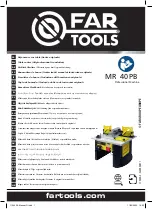
25. Spanning Tree
ROX™ v2.2 User Guide
232
RuggedBackbone™ RX5000
A revised and highly optimized RSTP version was defined in the IEEE standard 802.1D-2004 edition.
IEEE 802.1D-2004 RSTP reduces network recovery times to just milliseconds and optimizes RSTP
operation for various scenarios.
ROX™ supports IEEE 802.1D-2004 RSTP.
25.1.1. RSTP States and Roles
RSTP bridges have roles to play, either root or designated. One bridge - the Root Bridge - is the logical
center of the network. All other bridges in the network are Designated bridges.
RSTP also assigns each port of the bridge a state and a role. The RSTP state describes what is
happening at the port in relation to address learning and frame forwarding. The RSTP role basically
describes whether the port is facing the center or the edges of the network and whether it can currently
be used.
State
There are three RSTP states: Discarding, Learning and Forwarding.
The discarding state is entered when the port is first put into service. The port does not learn addresses in
this state and does not participate in frame transfer. The port looks for RSTP traffic in order to determine
its role in the network. When it is determined that the port will play an active part in the network, the
state will change to learning.
Figure 25.1. Bridge and Port States
The learning state is entered when the port is preparing to play an active part in the network. The port
learns addresses in this state but does not participate in frame transfer. In a network of RSTP bridges,
the time spent in this state is usually quite short. RSTP bridges operating in STP compatibility mode
will spend six to 40 seconds in this state.
After “learning,” the bridge will place the port in the forwarding state. The port both learns addresses
and participates in frame transfer while in this state.















































